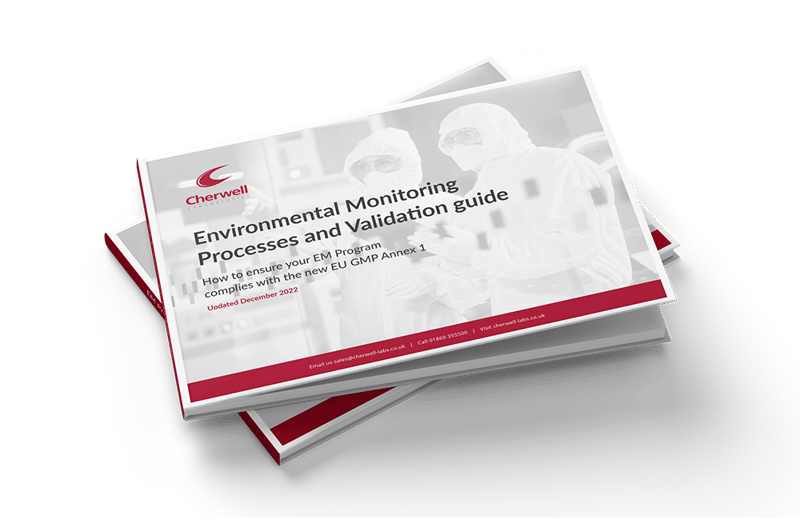In this post we'll cover:
- How temperature changes and trapped water molecules cause condensation in agar plates
- "Wet plate" conditions that can smear colonies and impact results
- The factors that increase risk of condensation occurring in agar plates
- How excessive condensation may cause coloured droplets, and what that means for your prepared media
- Optimum storage conditions and practices for prepared media
What causes condensation in agar plates?
When condensation occurs within an agar plate, it’s usually visible as tiny droplets of water on the lid; sometimes the droplets are visible within the packaged sleeve of plates. But why does this condensation occur? Is condensation in agar plates to be expected? And does this impact the quality and performance of the prepared media?
As the sleeves of plates are not vacuumed-packed there will be some air, which contains water molecules, trapped within the packaged plates. In addition, there are water molecules trapped within the matrix of the solidified agar media.
Rapid temperature fluctuations over a wide range – greater than a 5°C variance, for example – can result in changes to conditions both inside and outside of the plate and packaging; this accelerates the forming of condensation.
What conditions are likely to exacerbate condensation?
If plates are stored near a window and exposed to direct sunlight, or placed near to a heat source such as a radiator, they are likely to be subjected to unavoidable temperature changes throughout the day. These fluctuations will cause the agar to “sweat”, which will increase moisture levels in the packaged media.
If the surrounding environment cools, some heat will be retained within the packaging, but there will be a difference in the temperature of the air trapped within the plate, and surfaces such as plate lid and packaging material.
Any contact of the trapped water molecules with the cooler surfaces will result in the formation of tiny water droplets, resulting in condensation.

Small amounts of condensation may not be avoidable, and should not represent a major issue. When stored in stable ambient temperature conditions – the perfect environment for Redipor® prepared media plates – the agar should be able to resorb some of the condensation after a few days.
Can "wet plate" impact results?
The occurrence of “wet plate” can affect the results of the microbiological testing. The movement of water on the agar surface can cause a “smearing” effect on any colonies that may be growing, which will hinder correct interpretation of data. There is potentially an increased risk of cross-contamination with the excessive water droplets, especially if the packaging has been compromised.
Agar “sweating” may also occur during incubation at higher temperatures – something in the region of 37°C, for example. To avoid compromising the results, some establishments choose to invert plates during incubation, storing them lid-down. Inversion prevents any condensation droplets falling on the surface of the agar. However, it’s important to follow the manufacturer’s recommended storage conditions for your prepared media.
Redipor plates benefit from being suitable for storage in ambient temperature conditions in the range of 10-25°C; while this means costly refrigeration is not required, significant fluctuations in ambient temperature should nonetheless be avoided. Redipor plates should be stored in a clean environment, and kept flat; they should not be stored on their side or inverted. Once packaging has been opened, it is advisable to use plates within three days, where possible.
What causes excessive condensation?
Plates that are moved from refrigerated conditions to a warmer location are more prone to excessive condensation. It's recommended that such plates are dried and conditioned to ambient temperature prior to use, in order to avoid excessive condensation forming.
Occasionally, when excessive condensation does occur, the water droplets show some slight colouration that is similar to the colour of the media. This could indicate inappropriate storage of plates, potentially with repeated exposure to adverse conditions, leading to media degradation. The water resulting from condensation “washes” the degraded media from the agar surface, which results in the formation of the coloured water droplets.
How Cherwell can help
At Cherwell, we're committed to providing high-quality products and expertise in environmental monitoring. We're here to support all your environmental monitoring needs with comprehensive solutions and expert guidance, so if you have any questions about prepared media, or would like any further information on any of our products, such as our tailor-made Redipor prepared media products, don’t hesitate to contact our team. In the meantime, explore Cherwell’s website and subscribe to our YouTube channel to keep up to date with developments and insights such as our Delivering Knowledge initiative.







